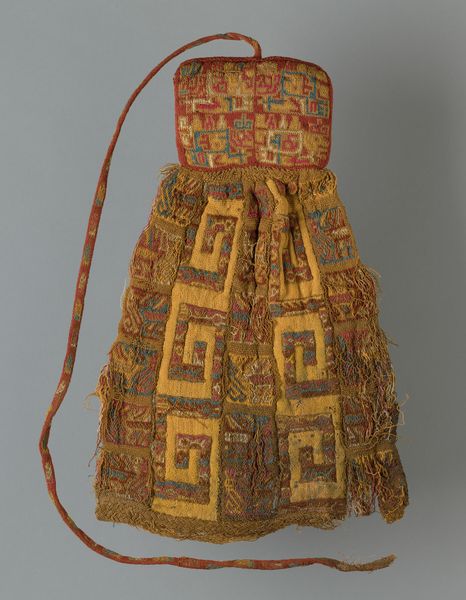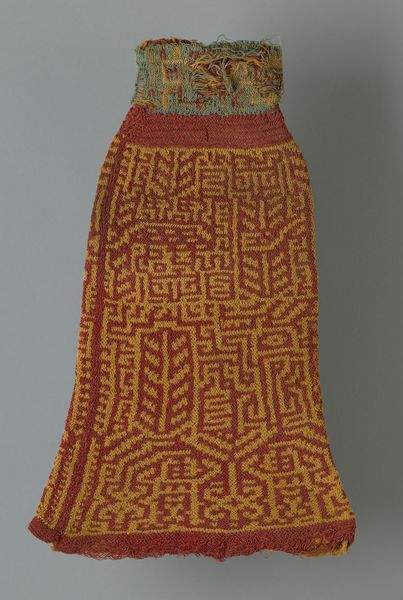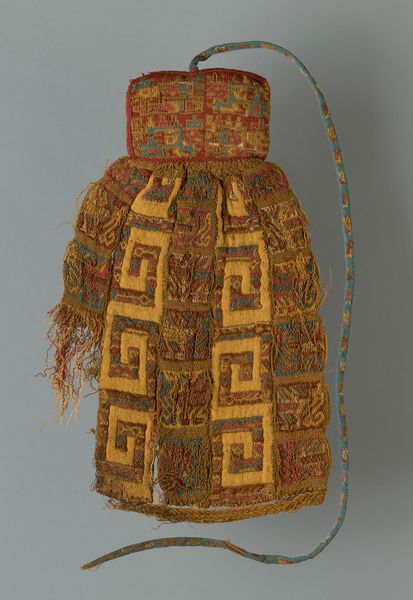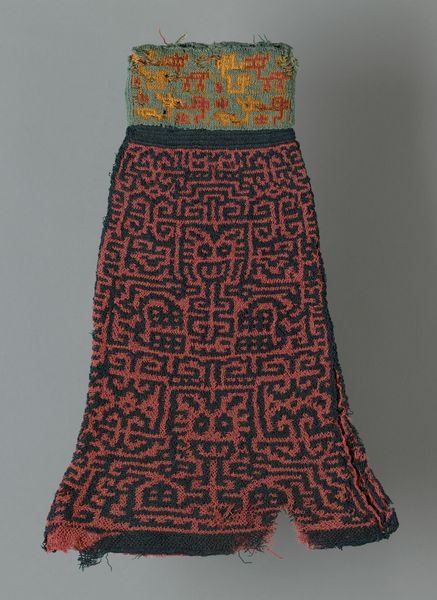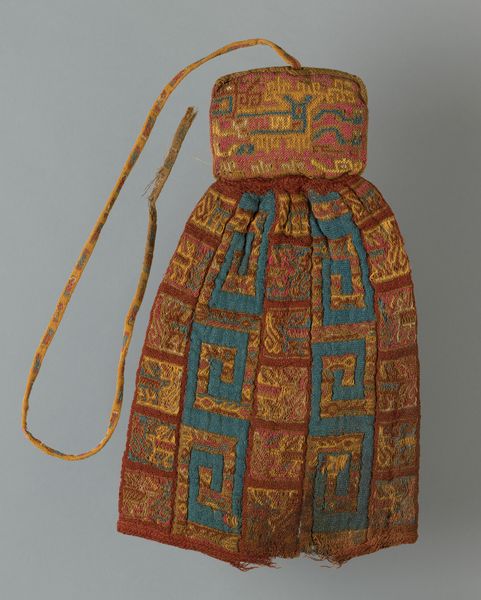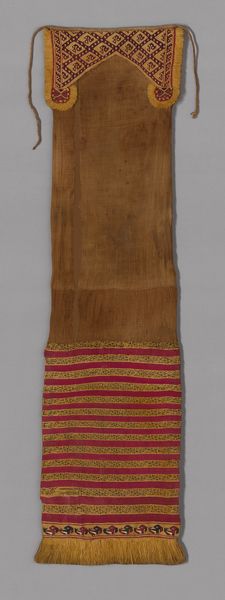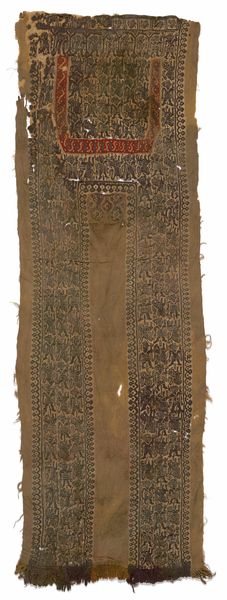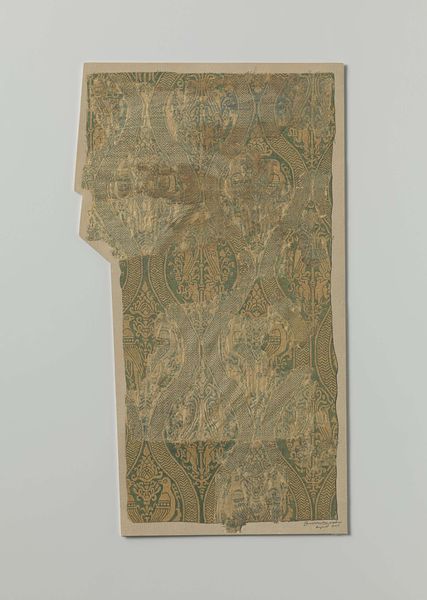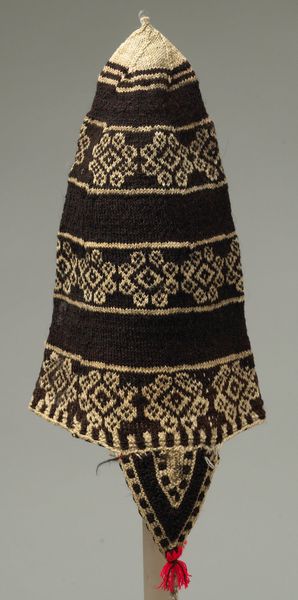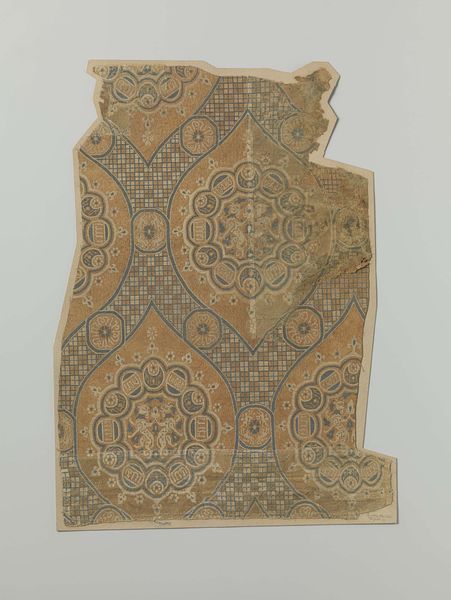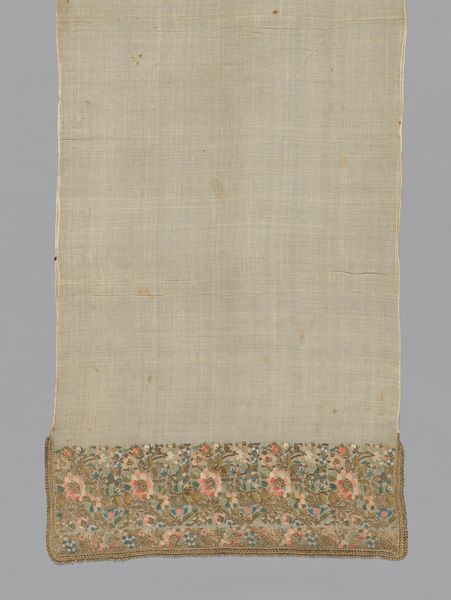
weaving, textile
#
weaving
#
textile
#
geometric
#
indigenous-americas
Dimensions: 34.3 × 21.3 cm (13 1/2 × 8 3/8 in.)
Copyright: Public Domain
Editor: This object is titled "Tassel", and dates possibly from 500 to 900 CE. It comes from the Nazca culture and is made of woven textile. The intricate geometric patterns are just beautiful! What do you see in this piece? Curator: It's crucial to understand this "Tassel" not just as an aesthetic object, but as a product of its material conditions and the labor involved. The very act of weaving, the sourcing of fibers, the application of dyes – these processes are integral to its meaning. How might the availability of specific dyes, for example, have shaped the design choices here? Editor: That's a really interesting point, I hadn't thought about it like that. I guess the colours and materials wouldn't just be aesthetic choices but would be completely dependent on what they had access to, or perhaps could trade for. Curator: Exactly. Think about the time invested in creating such a detailed textile. The repetitive actions, the skill required. We have to acknowledge the hands that produced this, and the social structures that supported or perhaps even exploited that labor. Does the geometric pattern hint at standardized production or individual creativity? Editor: It’s difficult to tell isn't it? I guess what I am seeing could be some kind of standard, and a master-craftsperson teaching others. Curator: Yes! Also consider that textiles often played multiple roles beyond mere decoration. Were they used in ritual practices? Did they denote social status? What clues about the social context of the Nazca people might be embedded within the fabric itself, in its structure? Editor: That really makes me see this piece in a whole new light! Looking at the actual making of the Tassel rather than the design moves the focus from it being just 'art' to a social object. Curator: Precisely. By centering process and material, we challenge traditional art boundaries and engage with a broader understanding of cultural production.
Comments
No comments
Be the first to comment and join the conversation on the ultimate creative platform.
